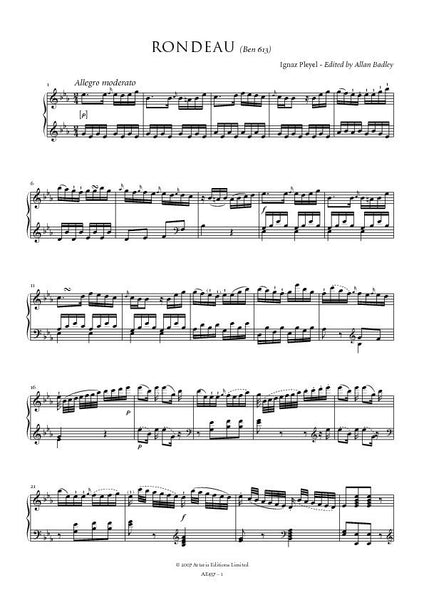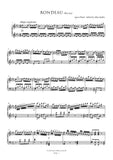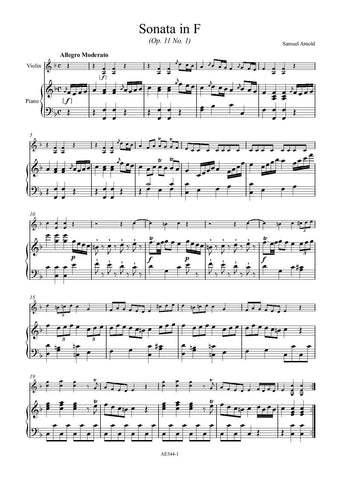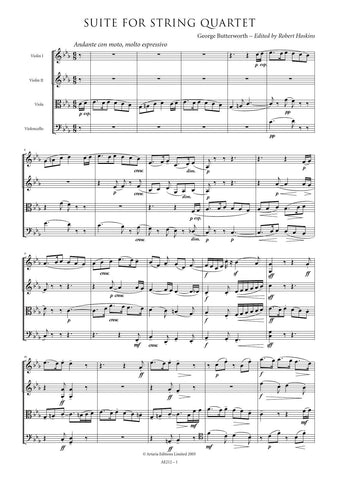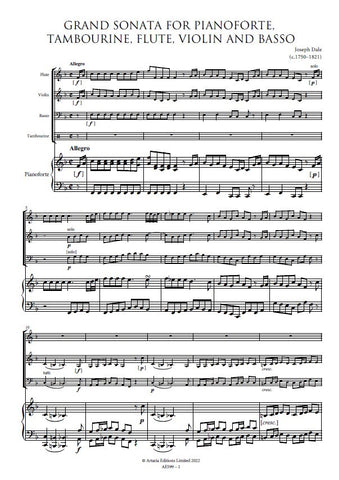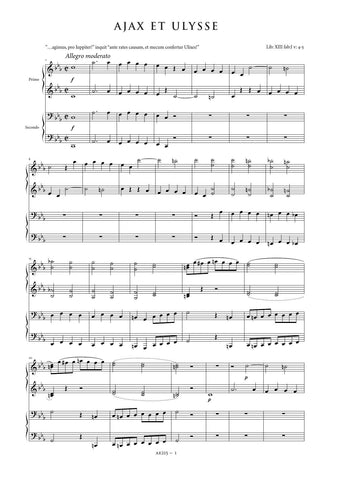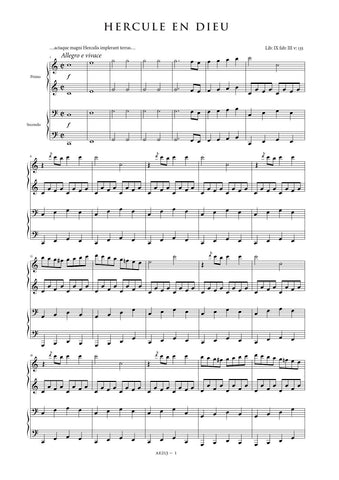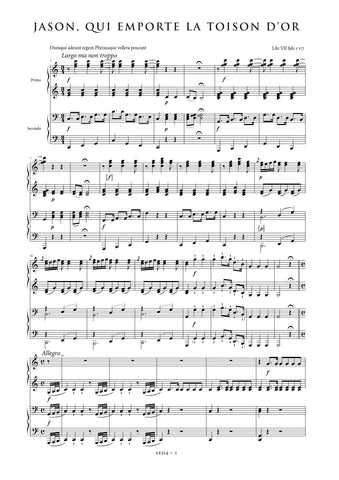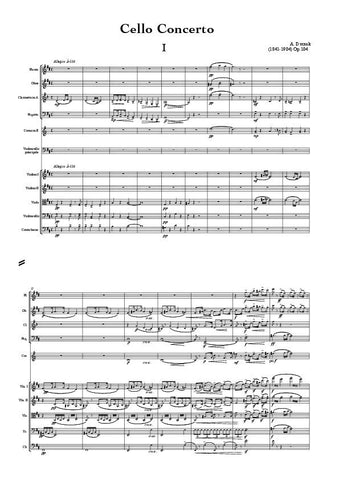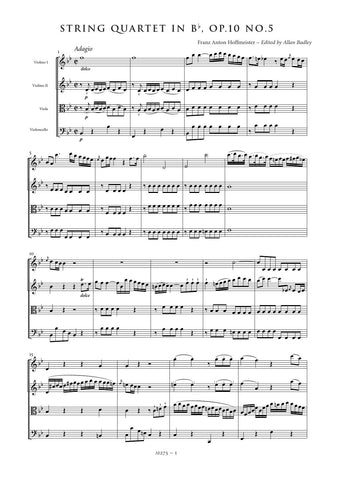Pleyel, Ignaz: Rondeau in E flat for Harp or Pianoforte (Benton 613) (AE457) – sheet music
Previous Product Next Product
Description |
Pleyel, Ignaz (1757-1831)
|
||||||||||||||||||||
Details |
Ignaz Pleyel (1757-1831) was at one time the most famous composer in the world. The popularity of his music eclipsed that of even his teacher Haydn and publishers vied to bring out his latest works as soon as they were finished. Some 2000 separate prints of Pleyel works had appeared by 1800 and his fame extended to every corner of Europe and as far afield as North America. Pleyel's career as a composer spanned less than thirty years with the majority of his works composed in the 1780s. He founded a successful publishing house in Paris in the mid-1790s and later began manufacturing keyboard instruments. With increasing demands on his time from his business concerns Pleyel's productivity as a composer dropped sharply and he ceased composing around 1805. Pleyel wrote very little solo keyboard music preferring instead to compose accompanied sonatas (i.e. piano trios). The attractive Rondeau in E flat (Benton 613), suitable for performance by either harp or fortepiano, illustrates many of Pleyel's strengths as a composer. It is attractive, technically resourceful and unerring in its sense of dramatic pace. Its principal theme is lively and distinctive, not too difficult technically and yet rewarding to play. The principal theme and the episodic material are elegantly constructed and reveal a sensitivity to the tone colour of the instrument. The minore section is dramatic and the octave doublings lend it a strength and power which contrasts effectively with the gentle rondeau theme. The final episode, the most technically challenging, adds a thrilling touch of drama to the closing phase of the piece. |
||||||||||||||||||||
Score Preview (best viewed in full screen mode) |
|||||||||||||||||||||




